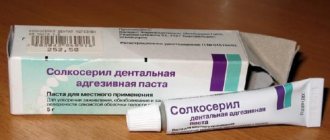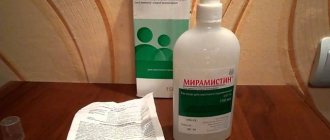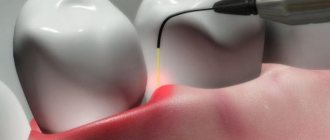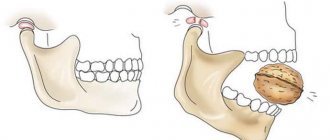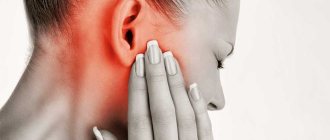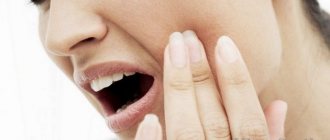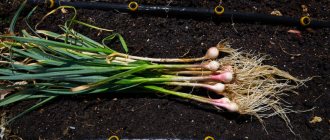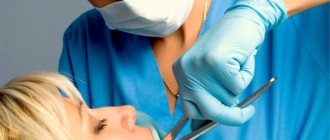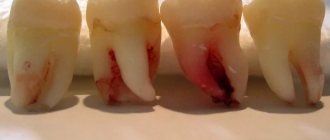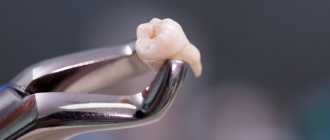There are many ways to prevent and treat oral diseases at home. Among them is gum massage , which is useful for various inflammatory, degenerative-dystrophic pathologies of the periodontal mucosa.
With its help, you can significantly improve the condition of periodontal inflammation, alveolar processes, periodontal disease and gingivitis, as well as reduce bleeding and pain. Manipulation around the cervical part of dental crowns is also good for increased susceptibility to plaque formation.
Gum massage during teething
Gum Massage During Teething
Teething can be very painful for a baby and parents are willing to try anything to relieve the pain. Gels and drops with lidocaine, anesthetic syrups, chilled water teethers and pacifiers of various shapes are used. You should definitely try gum massage, which can quickly relieve pain and allow the child to relax and, for example, fall asleep.
Massage the gums with the index finger of the left or right hand. Hands must be washed thoroughly. You should not treat them with alcohol or any other substance before touching your baby’s gums. If you do spray your hands, be sure to rinse them with cool running water.
Run your finger back and forth across the gum, applying gentle pressure to the gum. Even if your child closes his mouth at the same time, this does not threaten you in any way, and it may be more convenient for him. Continue slow movements back and forth until your baby stops fussing.
Massage can be done not only with your finger, but also with a gauze swab of a suitable size, soaked in cool boiled water. In this case, massage is done in exactly the same way as with a finger, but using a gauze pad. You can also wrap your own finger in gauze and massage it that way. Be careful and don’t put too much pressure on the baby’s gums in this case.
You can also massage your gums by wrapping your finger in a clean, damp cloth. Cool water will have an additional cooling effect, which also helps relieve pain.
This massage can be done as many times a day as needed. It is not contraindicated and has no side effects. If at the moment you do not have time to give your child a massage, then offer him a cooled water teether of a convenient shape, not too thick and small, so that the child can comfortably hold it in his hand.
You can also offer your baby a bottle with a pacifier filled with water at room temperature to soothe teething pain. Sucking movements and cool water will help relieve the condition. Tips and warnings
If you use a gauze swab or napkin, then take cold water for wetting, but if you need to fill the bottle, then the best solution is water at room temperature - the difference between the child’s body temperature and the temperature of the water in this case will be sufficient. Do not freeze water teethers; cool them only in the refrigerator or only briefly in the freezer. Ice can harm your baby.
Do not use medications containing aspirin or acetylsalicylic acid for pain relief. For children, it is safer to use drugs based on ibuprofen or acetaminophen.
Vacuum massage
This procedure is performed only in a doctor's office using a set of vacuum tubes. The effect occurs due to negative pressure on the gums. During the massage, slight hematomas may appear, which, with gradual resorption, have a beneficial effect on the immune system.
Feedback from such procedures is only positive:
- The condition of the mucosal vessels is normalized.
- New capillaries are actively formed.
- Pathogenic processes are suspended, making it possible to quickly heal the oral cavity from any diseases.
- The nutrition of the gums improves, and as a result, the health of the entire dentition.
Taking care of the oral cavity: how and why to massage the gums?
Every person knows how important it is to brush your teeth daily.
But not all people know that in addition to the standard oral hygiene procedure, it is necessary to massage the gums, which is no less important than brushing your teeth.
Read also: Nurofen for teething without fever
Its influence on human health has been studied for many centuries, and it has been found that it has many beneficial effects: improves health, gives strength and elasticity to muscles, prolongs youth, increases vitality, gives vigor and gives good health.
The effectiveness of massage has been scientifically proven and tested over many years of practice, and it itself is a physiological healing method.
Benefits of massage
Massaging the gums is considered the most natural and effective method of preventing periodontal disease, which can be done at home.
In addition, it has the following beneficial properties:
- eliminates stagnant processes in tissues;
- improves blood circulation;
- activates metabolic processes;
- improves nutrition of periodontal tissues;
- strengthens teeth;
- increases resistance to negative external influences;
- promotes greater supply of nutrients to tissues;
- prevents loosening of teeth and their loss;
- increases the outflow of lymph and blood;
- thickens mucous membranes, making them less vulnerable;
- eliminates swelling;
- is the prevention and treatment of periodontal disease;
- prevents inflammatory processes;
- Helps reduce bleeding gums.
Contraindications
The main contraindications for using gum massage at home are :
- inflammatory process in the mucous membrane of the gums;
- lack of teeth;
- tartar;
- discharge of pus;
- tooth root caries in an advanced stage;
- healing period after tooth extraction;
- wearing dentures.
Important! If there are contraindications, you should undergo treatment and only after its completion can you begin the procedure.
Indications for massage:
Periodontitis
Bleeding gums, or periodontitis, is a common inflammatory disease of the muscle tissue surrounding the tooth.
Gum massage for periodontitis has proven itself as an effective treatment for the initial stage of the disease.
If there is bleeding, you should not use a brush or massage devices; all manipulations should be carried out with your fingers.
During the procedure, you should not press hard on the gums; movements should be smooth and slow.
For better gliding, your fingers can be lubricated with olive oil or toothpaste, and after the procedure you should rinse your mouth well with an antibacterial agent.
Periodontal disease
People suffering from periodontal disease benefit from massage to normalize blood circulation in the oral cavity; it is carried out daily at home on their own.
Additionally, it is recommended to use medicinal gels and essential oils, such as cedar or sea buckthorn.
You need to massage the gums with your fingers; you can also use an irrigator, a special device that allows you to massage more effectively.
However, before starting home treatment, you should definitely consult a specialist. Since in cases where the cause of the disease is improper growth of teeth or an incorrect bite, the help of a specialist is required.
Teeth straightening
Gum massage to straighten teeth is a therapeutic agent that is used in combination with special straightening methods.
Tactile effects on the palate and gums make the alignment procedure less uncomfortable.
Massage should be done using a toothbrush with gentle movements, as a result of which blood flow increases, which contributes to the effectiveness of the dental straightening procedure.
In order to straighten teeth, you should regularly perform a comprehensive oral massage, compiled individually by a dentist.
Features of massage for periodontal disease and periodontitis
For diseases such as periodontal disease and periodontitis, the dentist may prescribe massage as an additional treatment procedure.
At the same time, targeted movements help remove stagnant fluids from periodontal pockets. If you additionally use essential oils of mint, eucalyptus, lemon, orange and coriander, the beneficial effects will increase significantly.
The procedure should be carried out only with clean hands, and the teeth must first be treated and rinsed. By improving metabolic processes, the gums become healthy, stronger, and the disease goes away faster.
How and with what to massage the gums?
Massage can be performed by a dentist and is often offered to patients in conjunction with professional dental cleaning, or it can also be successfully performed independently.
The massage procedure should be performed after brushing your teeth.
Read also: Order of baby teeth eruption diagram
You need to use the following basic movements: stroking, pressing, rubbing, squeezing.
For these purposes, you should use a soft brush with firmly attached natural bristle hairs.
You cannot use a hard toothbrush with artificial bristles; it thins the tooth enamel and injures the tissues.
There are several ways to perform a massage:
- Shtilman method. The brush should be set at an angle of 45 degrees, with the ends of the bristles on the gum and directed towards the tooth roots. You need to apply light pressure on the brush, while simultaneously moving it in different directions, so that the ends of the bristles are in soft contact with the gum.
- Finger method. Performed using the thumb and index finger. The jaw is grasped on both sides, and the fingers move from its center to the sides, movements that should repeat the physiological movements that occur during chewing of food. When massaging the lower jaw, the fingers should move from bottom to top, and the upper jaw - from top to bottom. Touches should be gentle and painless, and movements should be rotational and circular. Duration is about 5 minutes.
- Charters method. It is performed using a toothbrush; manipulations consist of vibrating circular movements, during which the side surfaces of the brush compress the gums.
- Indirect massage. It is done using fingers through the skin of the cheeks.
- Using a special silicone massager. It is especially gentle on the gums and does not injure them.
For infants, gum massage during teething is done with the index finger of the left or right hand.
The most effective method is vacuum gum massage.
The device uses vacuum tubes to help move lymph closer to the mucous membrane of the gums, stimulating local immunity.
For deeper oral care at home, use an irrigator to clean and massage the gums.
Using an irrigator, a pulsating stream of water is created, which effectively massages the gums and also cleans the intergingival spaces and areas between the teeth.
Vacuum therapy
vacuum therapy has become widespread in periodontology - the use of a method of reduced pressure in tissues, which has some similarities with cupping therapy. Proposed in the early 30s of our century by the German doctor Gebhardt (1954), this method did not attract the attention of dentists and only in the 50s they started talking about it again (Gebhardt, 1955).
V.I. Kulazhenko, who substantiated its theoretical basis, developed the methodology and indications for use. The author designed a vacuum apparatus accepted for mass production. The essence of the method is the formation of hematomas on the gum mucosa, the reverse development of which improves local tissue metabolism and increases the regenerative ability of tissues.
The technique is reduced to the formation of hematomas on the gum mucosa closer to the transitional fold using special tubes with a diameter of 5-7 mm, connected by a hose to a vacuum apparatus that creates a negative pressure in this system of up to 40 mm Hg. Art. When pinpoint extravasation, often merging into a continuous hematoma, forms on the mucous membrane pulled into the tube, the tube is carefully removed by introducing air into the system. At the same time, 6-8 hematomas are formed in one visit. On the next visit, hematomas form in other areas. Re-formation of hematomas is recommended no earlier than after 5-7 days (the time for the reverse development of the hematoma).
The time it takes for hematomas to form varies depending on the area of application and the resistance of the capillaries, as well as the degree of vacuum formed. According to studies by V.I. Kulazhenko (1960), in practically healthy people, a hematoma forms in the area of single-rooted teeth within 70-90 seconds, in the area of multi-rooted teeth - 80-100 seconds at a pressure of 40 mm Hg. Art. The time for hematoma formation from 10-15 seconds at the initial visit increases as the resistance of the capillaries improves and the clinical picture improves. If hematomas do not form within 90 seconds, then their formation in this area is stopped.
Indications: - all forms of periodontal disease.
Contraindications: pronounced inflammatory phenomena of the oral mucosa, abscesses.
Vacuum massage, proposed by I. O. Novik and Z. M. Epelbaum (1962), is based on the same principle of applying negative pressure in tissues. The technique of its implementation is reduced to smooth movement of a vacuum tube along the mucous membrane of the gingival margin in order to create intermittent negative pressure. The application of a vacuum tube to the stationary mucous membrane of the gingival margin prevents its retraction into the tube and ensures the free sliding of the latter.
According to S.I. Frankovskaya (1966), vacuum massage enhances the movement of blood in the arterioles and promotes the outflow of stagnant blood.
Indications for use: all forms of periodontal disease.
Contraindications: presence of abscesses, exacerbation of periodontal disease.
In the clinic of therapeutic dentistry I LMI named after. acad. IP Pavlova is widely used in the treatment of periodontal disease, the method of negative pressure, both in the form of hematoma formation and in the form of vacuum massage. We usually carry out this type of therapy during the period of conservative treatment of periodontal disease, using it on the same areas that were treated during a given patient visit. Due to some pain in these procedures, especially during the first visits, we do not form more than 5-6 hematomas at a time. We consider the use of anesthesia, as suggested by some authors (V.I. Kulazhenko, 1960), in this case inappropriate, since topical anesthesia does not provide a good analgesic effect, and infiltration anesthesia makes it difficult to see and creates inadequate conditions for the formation of hematomas. According to our data, careful work without putting pressure on the alveolar edge with the tube, without roughly tearing it off from the mucous membrane, is quite calmly tolerated by patients.
How to reduce teething pain in your baby
Pain during teething in a child occurs in 60% of cases, while in the rest the process is asymptomatic. Reduced appetite, swollen gums, drooling and the child’s desire to gnaw and bite everything can complete the picture. You can alleviate the condition with the help of massage, medications, and traditional medicine.
Before using any of the methods, it is important to exclude contraindications and, if possible, consult with a specialist.
When is massage applied?
In dentistry, a similar procedure is often recommended in the early stages of gingivitis or periodontal disease. This is an auxiliary treatment method for periodontitis. Sometimes it is recommended to relax the mucous membrane after minor operations on the gums, when it is necessary to avoid stagnation of lymph and ichor. It is prescribed when wearing dentures and braces to restore blood flow and relieve painful tension.
Gum massage should be done to babies when cutting their first teeth. Usually this process is difficult for children and parents, accompanied by salivation, whims and tears. To avoid constantly giving pain medication, doctors recommend applying gentle pressure several times a day. This helps the crown pass through the mucosa faster and relieves the burning sensation without ointment or gel. In the pharmacy chain you can even purchase a specially designed silicone massager that has soft pimples.
Gum massage for painful teething
This is the easiest way to relieve pain and itching in babies, improving blood circulation and speeding up teething. To carry it out, use a gauze swab, finger or a special toothbrush.
Method of massaging the gums with your finger.
- Wash your hands well, paying special attention to the area under the nails, and treat with an antiseptic.
- It is recommended to massage with the little finger, index finger or thumb exclusively above the gums, starting with stroking back and forth to the painful area. Using the same movements, gradually approach the future tooth.
- You can rub and squeeze the area. The criterion for correct execution is the child’s emotions and his condition.
- The procedure takes 15-20 minutes.
- All movements should be light and careful so as not to injure the child.
Read also: Cutting fangs symptoms
This technique is suitable for massage with a special silicone finger brush.
You can also use a piece of ice wrapped in cloth or gauze, or a swab soaked in cool water. The procedure is performed strictly in the area of the emerging tooth for no more than 5 minutes.
The advantages of this method of relieving pain in infants are the absence of contraindications, side effects, and the ability to perform an unlimited number of procedures. Spoons and pieces of food, including bread and sugar, that injure the gums are not recommended as devices for massage.
If the pain during teething is severe, a small amount of lidocaine, previously diluted with water, is used. The addition of acetylsalicylic acid is contraindicated.
Teethers that have a handle for holding and an uneven surface to eliminate itching of the gums can help with painful conditions. Cooling toys contain a gel or liquid inside that cools in the refrigerator within a few minutes. As a result of their use, the gums are cooled and pain is reduced.
Personal opinion
Hmayak Hakobyan, artist:
– I have a difficult attitude towards dentists. Ever since childhood. At that time, dental offices resembled Malyuta Skuratov’s medieval torture chamber, one could be horrified by the sight of them: from the antediluvian equipment to the arsenic with which you had to walk around in your mouth all day. The quality of treatment at that time was also comparable. Back then there were no modern drugs, fillings, or materials. Because of this, I lost many teeth in childhood and adolescence.
But even now, when cool dental clinics have appeared, it hasn’t gotten any better, in my opinion. I recently went to a dental center, where they gave me two fillings and charged me crazy money. But before I could get home, I started having terrible pains. I had to remove the nerve. Now I urgently need to go to the dentist again, and I'm afraid. But nothing can be done, I have to: after all, I am an actor, and for an actor it is very important to have healthy, beautiful teeth.
/health/life/4996″
How to treat periodontal disease at home.
Dentists are confident that treating periodontal disease at home can be an effective addition to professional therapy.
Unfortunately, periodontal disease is a chronic disease, meaning it will stay with you for life. But this disease can be transferred to the stage of supervised remission, that is, relative rest without exacerbations. And to maintain this condition, simple folk remedies can be very useful. It should be remembered that without complex therapy, periodontal disease is practically untreatable. Therefore, the use of infusions, decoctions and other options of traditional medicine must be combined with drug treatment prescribed by a doctor.
Traditional methods of treating periodontal disease
An experienced dentist, prescribing professional therapy, will tell you how to cure periodontal disease at home. Available folk remedies cannot stop the destruction of gum tissue, but they are quite capable of easing the unpleasant symptoms of periodontal disease, reducing discomfort, and reducing the intensity of the inflammatory process.
- We fight inflammation. To eliminate the inflammatory process and pain, infusions of lingonberry leaves, oak bark, calendula flowers and tricolor violet are used. The infusion used for rinsing should be warm.
- We remove pronounced looseness of the gums. An infusion of walnut leaves may help: 2 tsp. walnut leaves pour 250 ml of boiling water, leave for an hour, then strain. Rinse your mouth with a warm solution 6 times a day at regular intervals.
- We get rid of increased bleeding gums. Infusions of leaves of St. John's wort, blackberry, sandy sedge, burnet, and blood-red geranium are used. Take 1 tbsp. l. any herb and brew in 1 liter of boiling water. Let it brew for 2 hours. Rinse your mouth with the resulting infusion throughout the day.
- We prevent tooth mobility. To prepare the infusion, a collection of medicinal herbs is used: cinquefoil erect (4 tbsp), horse sorrel (2 tbsp), sauerkraut solution (300 ml). Mix all ingredients and let it brew for 24 hours. Rinse your mouth with a warm solution 6 times a day.
Before you start rinsing with infusions of medicinal plants, you should thoroughly brush your teeth. The intervals between procedures should be at least 3 hours.
Gum massage using folk remedies
In case of periodontal disease, the doctor can prescribe gum massage on an individual basis and taking into account possible contraindications. The procedure can be performed in the dentist's office. But if you are responsible enough and feel able to do it regularly on your own, then your dentist will tell you how to treat periodontal disease at home using massage, making it an important part of your daily oral care routine. Folk remedies will help enhance the effectiveness of this massage:
- fir and sea buckthorn oils have an antiseptic effect and promote the regeneration of damaged tissues
- honey with sea salt has disinfecting, anti-inflammatory, healing properties
- essential oils of mint, eucalyptus, lemon, orange, coriander strengthen, soothe gums, heal mucous tissue and relieve inflammation
Myogymnastics for periodontal disease
Myogymnastics, a set of special therapeutic exercises, has a good effect on the periodontium in any disease. For periodontal disease, you can perform physical exercises for the facial muscles using a fresh sprig of pine needles.
- Chew the twig, making movements from top to bottom, alternating with different teeth. Frequency: daily for 3–5 minutes. within 3 weeks
- Hold the twig between your teeth and move your jaw to the right, left, forward, backward. Frequency: daily for 3 minutes for 2 months
- Take one end of the twig in your hand and grab the other end with your teeth. You need to try to tear off part of the twig with your teeth. If discomfort or pain occurs, ease up. Frequency: 1 min. per day for 2 weeks
Expert opinion
Traditional methods should not be excluded from the complex of therapy for periodontal disease. Additional treatment at home at different stages of the disease can help not only prevent relapse, but also cope with the increase in the number of bacteria and stop the inflammatory process. But alas, it is impossible to defeat periodontal disease with the help of traditional medicine alone. It can provide some support to the patient, including psychological support, relieve some symptoms and thereby bring short-term relief without eliminating the cause of the disease. Which, naturally, will develop and progress.
Therefore, the fight against periodontal disease must begin in a dental clinic, at an appointment with a professional doctor, using the achievements of modern medicine in order to truly stop the process of tissue destruction. Only against the backdrop of competent dental treatment can we say that the use of essential oils, infusions and other remedies adopted in folk tradition are truly beneficial for periodontal disease.
/blog/kak-lechit-parodontoz-v-domashnikh-usloviyakh/"
